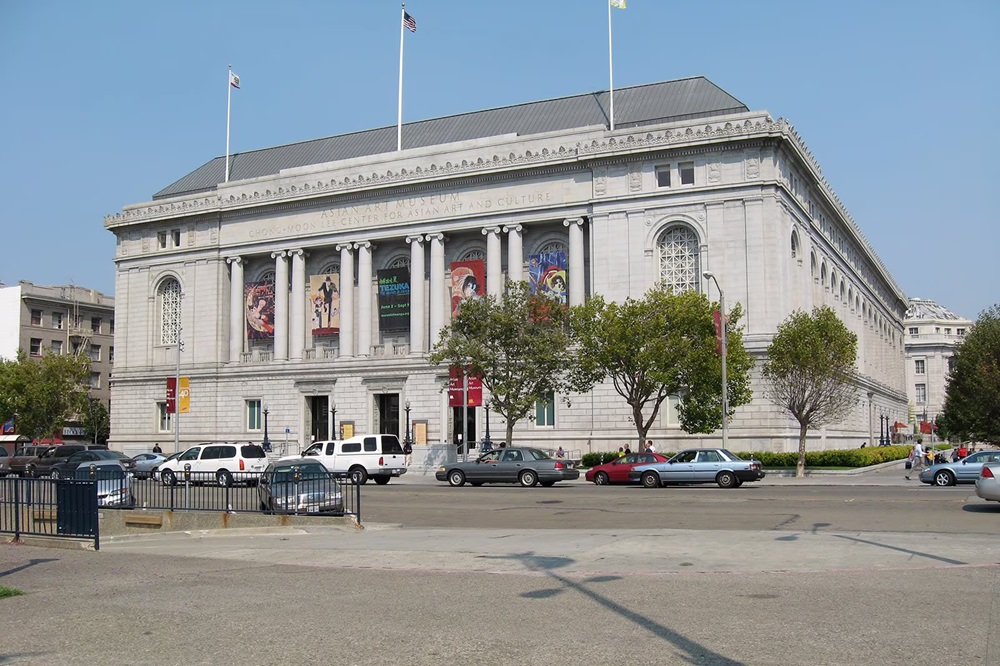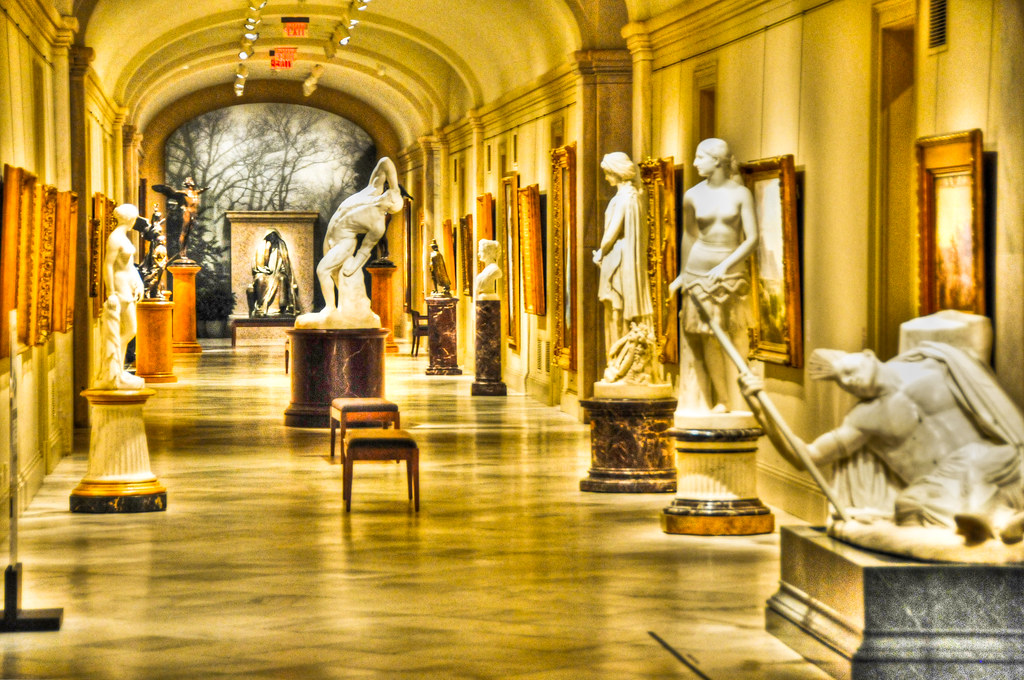Asian art museums in the US are vital to the nation’s artistic and cultural environment. These organisations are essential to preserving, presenting, and interpreting Asia’s rich artistic traditions, spanning a wide geographic area that includes East, South, Southeast, and Central Asia. Asian art museums are essential venues for cross-cultural dialogue and comprehension. These museums offer artworks from various Asian cultures, which helps people understand Asia’s rich and varied past. They let tourists know how Asian social, cultural, and religious contexts have influenced art. This comprehension fosters a more diverse and inclusive cultural discourse inside the US and aids in bridging cultural divides.
Another essential role of these museums is the preservation of Asian art. Asian art museums in the USA work to protect these priceless treasures for future generations. Asian countries have faced historical challenges like colonialism, war, and natural disasters, threatening their cultural heritage by housing and conserving artworks, manuscripts, textiles, and artefacts. To guarantee the longevity and integrity of the artworks, this preservation activity also entails academic research, conservation initiatives, and educational initiatives.
Asian art museums are excellent sources of information. They provide a variety of lectures, workshops, and academic programmes for a range of groups, including the general public, scholars, and students. These courses offer perceptions of the historical relevance, meaning, and artistic methods of Asian art. Visitors can learn more about Asian civilizations and their contributions to world art history by interacting with these tools.
Asian art museums’ collections serve as a source of inspiration for modern designers and artists. The elaborate craftsmanship, avant-garde methods, and deep meaning of Asian art have impacted American art styles and design processes. Exhibitions that combine modern and traditional Asian art frequently take place at museums, bringing attention to the continuous conversation between the past and present and stimulating fresh artistic interpretations. Asian art museums help to foster diversity and inclusiveness in a multicultural culture such as the United States of America. They give voices that have previously been underrepresented in mainstream cultural institutions a forum and showcase the artistic accomplishments of Asian communities. These museums work to dispel misconceptions and advance a more complex understanding of Asian cultures by showcasing Asian art.
Asian art museums contribute significantly to the economy. They boost the local economy by drawing in tourists, academics, and art fans from around the globe. Large crowds attend these museums’ unique exhibitions, cultural festivals, and activities, which promote tourism and help local companies.
Asian art museums in the US are important for reasons other than just keeping artefacts. These vibrant establishments support economic growth, encourage diversity and inclusivity, maintain cultural history, inspire artistic creativity, and promote cultural interaction. They thereby enhance the lives of those who visit and interact with their collections and are fundamental to the cultural and creative fabric of the United States.
Smithsonian American Art Museum
An essential component in conserving, honouring, and understanding the rich cultural legacy of the United States is the Smithsonian American Art Museum (SAAM). Originally founded as the National Gallery of Art in 1829, it changed its name to the SAAM in 2000 and now encompasses several centuries of American art history. SAAM, home to over 44,000 artworks, protects priceless works highlighting American identity, history, culture, and diversity. From multimedia installations to famous paintings, every piece adds to the fabric of American cultural expression.

The museum tracks the development of American art movements and styles from colonial to modern times. Viewers can see how artists have reacted historically to political revolutions, cultural developments, and socioeconomic changes. As part of its dedication to education, SAAM provides materials and activities for guests of all ages. It promotes a broader awareness and enjoyment of American art through online projects, workshops, talks, and exhibitions.
SAAM, a division of the Smithsonian Institution, encourages intercultural communication. Its collections and exhibitions tackle social justice, diversity, and identity issues while promoting critical artistic views on American culture. The museum encourages research and scholarship in American art history by granting access to its vast archives and facilitating partnerships with academics, artists, and organisations across the globe.
Seattle Asian Art Museum
The Seattle Asian Art Museum (SAAM) is integral to the American understanding of Asian art and Seattle’s cultural scene. This museum in Volunteer Park is an essential organisation for researching, conserving, and showcasing Asian art and culture. The first museum in the US devoted solely to Asian art, SAAM opened its doors in 1933. Its innovative importance in promoting knowledge and appreciation of Asian cultures when such exposure was scarce is highlighted by its early founding.

The museum is home to a vast collection of artwork from many Asian areas and historical periods. From modern Indian sculptures to ancient Chinese pottery, the collection provides a thorough understanding of creative customs, ideologies, and histories from all over the continent. As part of its dedication to outreach and education, SAAM provides seminars, lectures, and programmes that broaden public knowledge of Asian art and culture. With these programmes, the museum acts as a community centre for learning and cultural interaction.
As a division of the Seattle Art Museum (SAM), SAAM promotes intercultural understanding and communication between Seattle and Asia via exhibitions, alliances with foreign institutions, and cooperative initiatives. The museum, created in 1933 by architect Carl F. Gould, has recently undergone extensive renovations and expansions. The goal of the renovation was to maintain the building’s historic charm while improving the museum’s capacity to display its collection. SAAM is vital to the Seattle community, providing programmes for various audiences, including researchers, families, students, and art lovers. These courses offer a more comprehensive understanding of cultural diversity and a closer relationship with Asian art.
Heritage Museum Of Asian Art
With its collection of historical objects and a wide range of artistic expressions, the Heritage Museum of Asian Art is a monument to the rich cultural fabric woven throughout Asia. It is essential to keep physical remnants of the past intact and advance knowledge of Asian cultures and their contributions to world heritage. The museum houses items that span continents and millennia, acting as a repository for history. These artefacts shed light on their everyday routines, beliefs, and artistic accomplishments through physical connections to past civilisations. Every artefact, from elaborate pottery to imposing sculptures, narrates a tale of mechanical mastery, artistic inventiveness, and cultural development.

In both education and cultural diplomacy, the museum is indispensable. Curating exhibitions that accentuate the diversity and interdependence of Asian civilizations fosters appreciation and understanding of other cultures. In addition to admiring the visual splendour of Asian art, visitors are encouraged to investigate the underlying ideologies, rituals, and social dynamics that influenced these works of art.
National Museum of Asian Art
 Essential on a national and international level is the National Museum of Asian Art, a well-known organisation devoted to conserving and presenting Asian art and culture. Being one of the most significant collections of works of art from several Asian civilizations that date back thousands of years, its function goes beyond simple display to include historical preservation, teaching, and cultural diplomacy. At its core, the museum serves as a custodian of invaluable artefacts and artworks that embody the rich tapestry of Asian heritage. Showcasing these objects, ranging from ancient sculptures and calligraphy to contemporary installations, provides visitors with profound insights into the artistic achievements and cultural identities of Asian societies. Such exhibitions celebrate creative expression and foster cross-cultural understanding and appreciation.
Essential on a national and international level is the National Museum of Asian Art, a well-known organisation devoted to conserving and presenting Asian art and culture. Being one of the most significant collections of works of art from several Asian civilizations that date back thousands of years, its function goes beyond simple display to include historical preservation, teaching, and cultural diplomacy. At its core, the museum serves as a custodian of invaluable artefacts and artworks that embody the rich tapestry of Asian heritage. Showcasing these objects, ranging from ancient sculptures and calligraphy to contemporary installations, provides visitors with profound insights into the artistic achievements and cultural identities of Asian societies. Such exhibitions celebrate creative expression and foster cross-cultural understanding and appreciation.
American Asian Arts Inc
American Asian Arts Inc. is significant because it is vital in promoting and protecting Asian American cultural heritage and artistic expressions in the US. American Asian Arts Inc. was established to address the underrepresentation of Asian American artists and their cultural contributions. It serves as a venue for displaying a variety of artistic mediums, such as literature, performing arts, visual arts, and more. The organisation strives to raise awareness of Asian American cultural identities by giving Asian American artists a platform to show their work, collaborate, and interact with larger audiences. For dispelling myths, promoting empathy, and honouring the great diversity of the Asian American community, this visibility is essential.
Asian art museums in the United States play a crucial role in bridging cultural divides and promoting awareness and respect for the rich artistic traditions of Asia. Besides serving as archives for modern masterpieces and historical relics, these organisations encourage discourse, learning, and cross-cultural interaction. By presenting varied viewpoints and creative manifestations, they commemorate Asia’s rich cultural legacy and underscore its continuous impact on worldwide art and society. Asian art museums in the USA are critical in fostering cultural diversity, empathy, and intercultural respect as we navigate an increasingly interconnected globe.
What Makes Grandma Moses’ Folk Art and Paintings So Beloved and Timeless?






